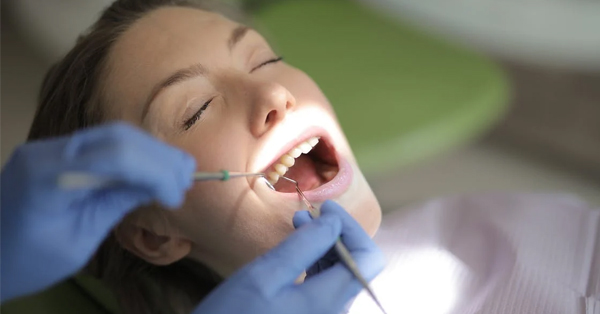All You Need to Know About Sedation Dentistry
Modern oral surgery has come a long way in its ability to provide optimal comfort for patients who must undergo invasive procedures. Unfortunately, however, many dental patients still feel anxiety whenever they must sit in the dentist's chair, even for relatively minor dental work.
If you've ever had trouble remaining calm for dental appointments, or grown anxious at the prospect of major procedures such as dental implants, sedation dentistry can help you feel at ease.
Definition of Sedation Dentistry
Sedation dentistry involves the use of sedative medications to relax dental patients and help them remain calm while undergoing everything from routine examinations and cleanings to extensive oral surgery work. The patient typically receives such medications alongside any necessary local anesthesia to ensure both relaxation and comfort. (The use of general anesthesia makes other forms of dental sedation unnecessary.)
Benefits of Sedation Dentistry
Sedation dentistry can benefit patients in a variety of scenarios. For example, children often have irrational fears of the dentist, especially if they have little to no experience in the dentist's chair or have had a painful dental experience in the past. For this reason, sedation often plays an important role in pediatric dental care.
Patients of any age can experience dental anxiety. An underlying general sense of anxiety - or "whitecoat syndrome" that comes into play specifically in medical settings - sometimes feeds such fear. Individuals with unusually low pain thresholds or sensitive teeth may have good reason to worry about what they'll experience during their dental procedure. Other patients may simply dislike the tedium of lengthy dental procedures and find it difficult to sit in the chair for long periods.
Sedation dentistry can prove invaluable for these patients. Although the strength and effects of sedatives used may vary, the patient ultimately feels tranquil and at ease throughout the procedure in question. By alleviating their anxiety, sedation dentistry also encourages patients to schedule dental exams and procedures as needed instead of delaying proper care.
Common Types of Dental Sedation
Dental sedation usually takes one of four primary forms. Depending on your anxiety level and/or the scale of your dental procedure, you may receive:
- Nitrous oxide sedation: This light form of sedation uses an inhaled gas commonly referred to as "laughing gas." Recipients breathe a mixture of nitrous oxide and oxygen through a face mask. The dentist adjusts the mixture as needed, with the effects wearing off relatively quickly after the procedure.
- Oral sedation: When most people think of sedation dentistry, they envision this technique. You'll receive an oral tranquilizer such as Valium or Halcion before your scheduled procedure, resulting in extreme grogginess.
- IV sedation: IV sedation has the same general effect as oral sedation, but as a constant infusion through a vein rather than a pre-set dosage. This method permits the dentist to adjust the sedation level throughout the procedure.
- General anesthesia: General anesthesia, also referred to as deep sedation, involves the use of intravenous drugs that render you completely or almost completely unconscious through your procedure. Extensive oral surgery may call for this type of sedation.
What to Expect from Sedation Dentistry
Your experience under dental sedation will vary according to the sedatives used. True to its nickname, laughing gas may make you feel giddy or giggly, although this effect fades as soon as the dentist introduces more oxygen into the mixture. Heavier drugs may induce an effect known as twilight sedation. In this state, you may feel almost asleep but can still respond to your dentist's questions and instruction. If you receive general anesthetic, you probably won't feel or even remember anything about the procedure at all.
Routine Cautions Regarding Dental Sedation
Skilled professionals trained in sedation dentistry can use sedatives safely and effectively. However, sedative and anesthetic drugs come with certain risks that call for vigilance and care in their use. Underlying health conditions can complicate the use of dental sedation. For this reason, it is important that your medical history form is filled out completely and accurately, including listing of all medications and supplements you currently take.
For all forms of sedation, you will be advised it you need to have an escort with you to drive you home post-procedure as while you may be awake, you'll likely feel some residual drowsiness that might impair your driving skills. Remember to make these plans before your appointment.
Sedation Dentistry Costs and Insurance
The cost of your sedation dentistry will depend on factors such as the type of sedation you received and how much of it you require. (The amount of sedation required can vary according to your physical size and age.) Most standard dental insurance plans won't cover sedation because insurers don't regard it as a medically essential treatment. You might receive coverage if your procedure involves multiple appointments, or if the use of sedation helps to reduce the overall procedure cost. Otherwise, plan to pay for this form of care either out of pocket or with the aid of a supplemental dental payment plan or account.
Woodview Oral Surgery can answer all your questions about sedation dentistry and provide this form of care if you need it. Contact our office to learn more.






5 Stars
based on 48 reviews
5 Stars
based on 15 reviews
5 Stars
based on 11 ratings